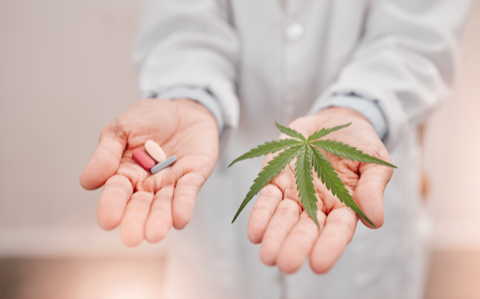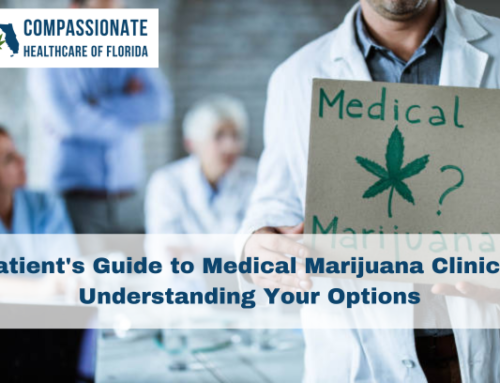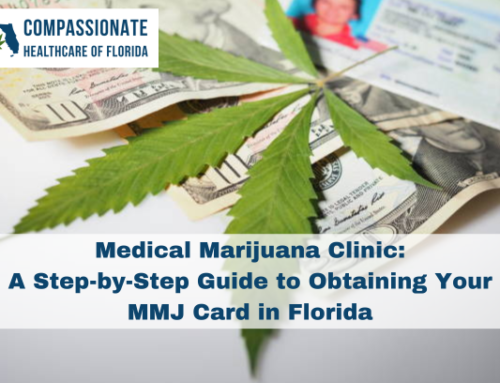
In recent years, medical marijuana has emerged as a contentious yet transformative topic in healthcare. Its legalization in various states has sparked debates, with proponents advocating its therapeutic potential while skeptics express concerns about its safety and efficacy. However, beyond the rhetoric lies a wealth of scientific evidence supporting its medical use. Let’s delve into the world of medical marijuana, separating fact from fiction and exploring its remarkable healing properties.
The History of Cannabis
The origins of cannabis can be traced back thousands of years to Central Asia, where it likely first emerged in the region now encompassing Mongolia and southern Siberia. Archaeological evidence suggests that early human societies began cultivating cannabis for its fibers, seeds, and medicinal properties around 10,000 years ago. The plant’s sturdy fibers were utilized for weaving textiles, crafting ropes, and making paper, while its seeds provided a nutritious source of food.
Throughout antiquity, cannabis played a prominent role in the spiritual and cultural practices of various ancient civilizations. In ancient China, cannabis was valued for its medicinal properties and used in herbal remedies to alleviate pain and treat various ailments. Chinese texts dating back to 2737 BCE mention Emperor Shen Nung prescribing cannabis tea for various medical conditions.
Similarly, in ancient India, cannabis, known as “ganja” or “bhang,” held sacred status and featured prominently in religious rituals and ceremonies. The Hindu god Shiva is often depicted with a “chillum,” a traditional smoking pipe used to consume cannabis during spiritual meditation.
It is interesting that cannabis combined with alcohol was one of the first instances of ancient anesthesia for surgery. However, its stigmatization in the 20th century hindered research and medical exploration until recent decades.
Understanding Medical Marijuana
Medical marijuana refers to the use of cannabis and its cannabinoids, such as tetrahydrocannabinol (THC) and cannabidiol (CBD), for treating specific medical conditions under medical supervision. THC is primarily responsible for the plant’s psychoactive effects, while CBD offers therapeutic benefits without inducing intoxication. With the adoption of medical cannabis use into many US states, therapeutic benefits of terpenes and flavonoids are also being leveraged to get the greatest response and relief from patients.
Health Benefits
The therapeutic potential of medical marijuana spans a wide range of medical conditions, including chronic pain, nausea and vomiting associated with chemotherapy, anxiety, PTSD, muscle spasms in multiple sclerosis, and epilepsy. Research indicates that cannabinoids interact with the body’s natural endocannabinoid system, regulating various physiological functions and alleviating symptoms.
Pain Management
 Chronic pain affects millions worldwide, significantly impacting quality of life. Medical marijuana has shown promise as an alternative or adjunctive therapy for managing pain, particularly neuropathic pain, arthritis, and cancer-related pain. Unlike opioids, which pose risks of addiction and overdose, cannabinoids offer analgesic effects with a much lower potential for dependency. Many states have even approved medical cannabis as recommendations for Opioid Use Disorder, a condition that can develop from extended opioid usage.
Chronic pain affects millions worldwide, significantly impacting quality of life. Medical marijuana has shown promise as an alternative or adjunctive therapy for managing pain, particularly neuropathic pain, arthritis, and cancer-related pain. Unlike opioids, which pose risks of addiction and overdose, cannabinoids offer analgesic effects with a much lower potential for dependency. Many states have even approved medical cannabis as recommendations for Opioid Use Disorder, a condition that can develop from extended opioid usage.
At the heart of medical marijuana’s pain-relieving properties lies the endocannabinoid system (ECS), a complex network of receptors, enzymes, and endocannabinoids within the body. Endocannabinoids, such as anandamide and 2-arachidonoylglycerol (2-AG), play a crucial role in regulating pain sensation, inflammation, and stress response. When activated, cannabinoid receptors—primarily CB1 and CB2—modulate neurotransmitter release, dampening pain signals and promoting a sense of well-being.
Mechanisms of Action
Cannabis contains over 100 cannabinoids, each exerting unique effects on the ECS and pain pathways. Tetrahydrocannabinol (THC), the psychoactive component of cannabis, activates CB1 receptors in the brain and spinal cord, altering pain perception and mood. Cannabidiol (CBD), a non-intoxicating cannabinoid, exhibits anti-inflammatory, analgesic, and neuroprotective properties, complementing THC’s effects while mitigating its psychoactivity.
Pain Management Benefits
Numerous studies have demonstrated medical marijuana’s efficacy in managing various types of chronic pain, offering relief where traditional therapies fall short. In neuropathic pain conditions, such as diabetic neuropathy and post-herpetic neuralgia, cannabinoids have shown promise in reducing pain intensity and improving sleep quality. Additionally, medical marijuana’s anti-inflammatory effects make it particularly beneficial for inflammatory pain disorders like arthritis and inflammatory bowel disease.
Furthermore, medical marijuana’s versatility allows for personalized treatment regimens tailored to individual needs and preferences. Different strains and formulations offer varying ratios of THC to CBD, enabling patients to customize their treatment based on pain severity, tolerance, and desired effects.
Mental Health Disorders
Anxiety, depression, and post-traumatic stress disorder (PTSD) are prevalent mental health conditions that often resist conventional treatments. Medical marijuana, particularly CBD, has demonstrated anxiolytic and antidepressant properties, offering relief to individuals struggling with these disorders. Moreover, preliminary studies suggest its potential in managing PTSD symptoms by modulating fear responses and enhancing emotional processing.
Epilepsy
For individuals with treatment-resistant epilepsy, conventional medications may offer limited efficacy and intolerable side effects. Medical marijuana, notably CBD, has emerged as a promising alternative, reducing seizure frequency and improving overall seizure control. Clinical studies and anecdotal reports suggest that medical marijuana, may reduce seizure frequency and severity in certain types of epilepsy, including Dravet syndrome and Lennox-Gastaut syndrome. Epidiolex, a CBD-based medication, has received FDA approval for the treatment of seizures associated with these rare and severe forms of epilepsy, marking a significant milestone in cannabis-based therapeutics.
Furthermore, research indicates that CBD may enhance the efficacy of existing antiepileptic drugs and mitigate drug-resistant seizures, offering hope to individuals with refractory epilepsy. While the mechanisms underlying CBD’s anticonvulsant effects are not fully understood, preclinical studies suggest modulation of ion channels, neurotransmitter release, and inflammatory pathways as potential mechanisms of action.
Despite its potential benefits, medical marijuana use for epilepsy requires careful consideration and monitoring, particularly regarding dosing, formulation, and drug interactions. Potential side effects may include fatigue, diarrhea, and changes in liver function, necessitating regular medical supervision and adjustment of treatment regimens. Additionally, individuals with epilepsy should consult healthcare professionals and adhere to legal and regulatory guidelines governing medical marijuana use in their respective state.
Navigating Legalization and Regulation
 While the medical benefits of marijuana are increasingly recognized, navigating its legalization and regulation remains complex. Each jurisdiction establishes its laws governing medical marijuana use, cultivation, distribution, and possession. Physicians play a crucial role in certifying patients for medical marijuana use, ensuring appropriate dosing and monitoring to optimize therapeutic outcomes while minimizing risks. Medical cannabis programs can vary widely from state to state. In Florida for example, the physician recommendations are good for up to 7-months at a time while in Pennsylvania they are good for 12-months. State fees are also differ from state to state, along with if taxes on products are present.
While the medical benefits of marijuana are increasingly recognized, navigating its legalization and regulation remains complex. Each jurisdiction establishes its laws governing medical marijuana use, cultivation, distribution, and possession. Physicians play a crucial role in certifying patients for medical marijuana use, ensuring appropriate dosing and monitoring to optimize therapeutic outcomes while minimizing risks. Medical cannabis programs can vary widely from state to state. In Florida for example, the physician recommendations are good for up to 7-months at a time while in Pennsylvania they are good for 12-months. State fees are also differ from state to state, along with if taxes on products are present.
Addressing Concerns
Despite its therapeutic potential, medical marijuana raises legitimate concerns regarding potential side effects, drug interactions, and long-term safety. Common side effects may include dizziness, fatigue, dry mouth, and cognitive impairment, particularly with high THC formulations. Additionally, individuals with a history of substance abuse or psychiatric disorders should exercise caution when using medical marijuana. Medical cannabis physicians are specifically trained to help patients reduce the risks and increase their overall quality of life with the proper use of medical cannabis. This differs from recreation cannabis states, where patients seek THC products solely for the psychedelic results rather than therapeutic benefits.
Conclusion
Medical marijuana represents a paradigm shift in healthcare, offering hope and healing to individuals grappling with debilitating medical conditions. By leveraging its therapeutic potential responsibly and advancing research efforts, we can unlock new avenues for treatment and alleviate suffering. As we continue to unravel the mysteries of medical marijuana, let’s embrace evidence-based approaches and foster informed dialogue to realize its full potential in modern medicine.
Read more
The Ultimate Guide to Choosing a Florida Medical Marijuana Clinic



